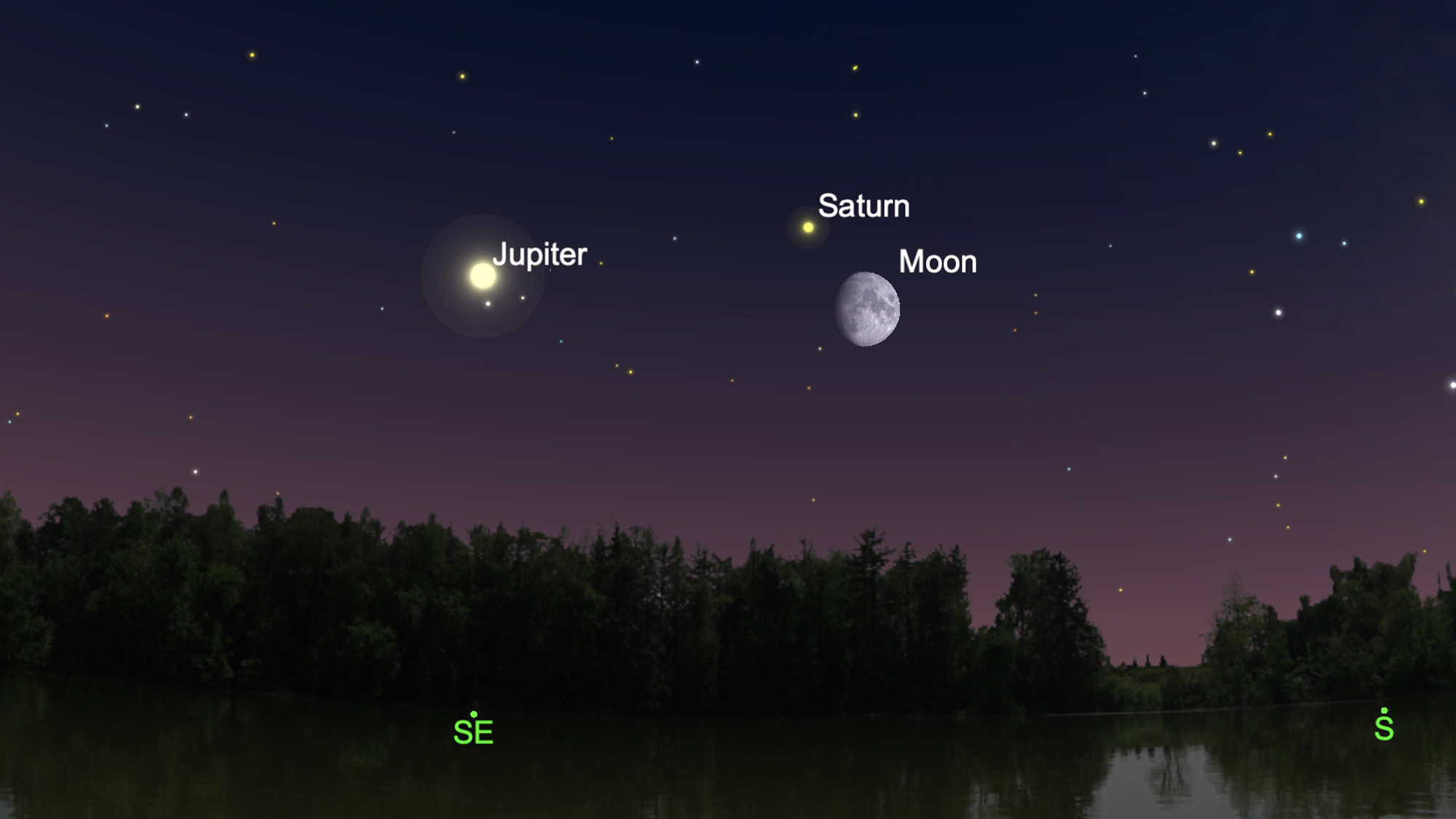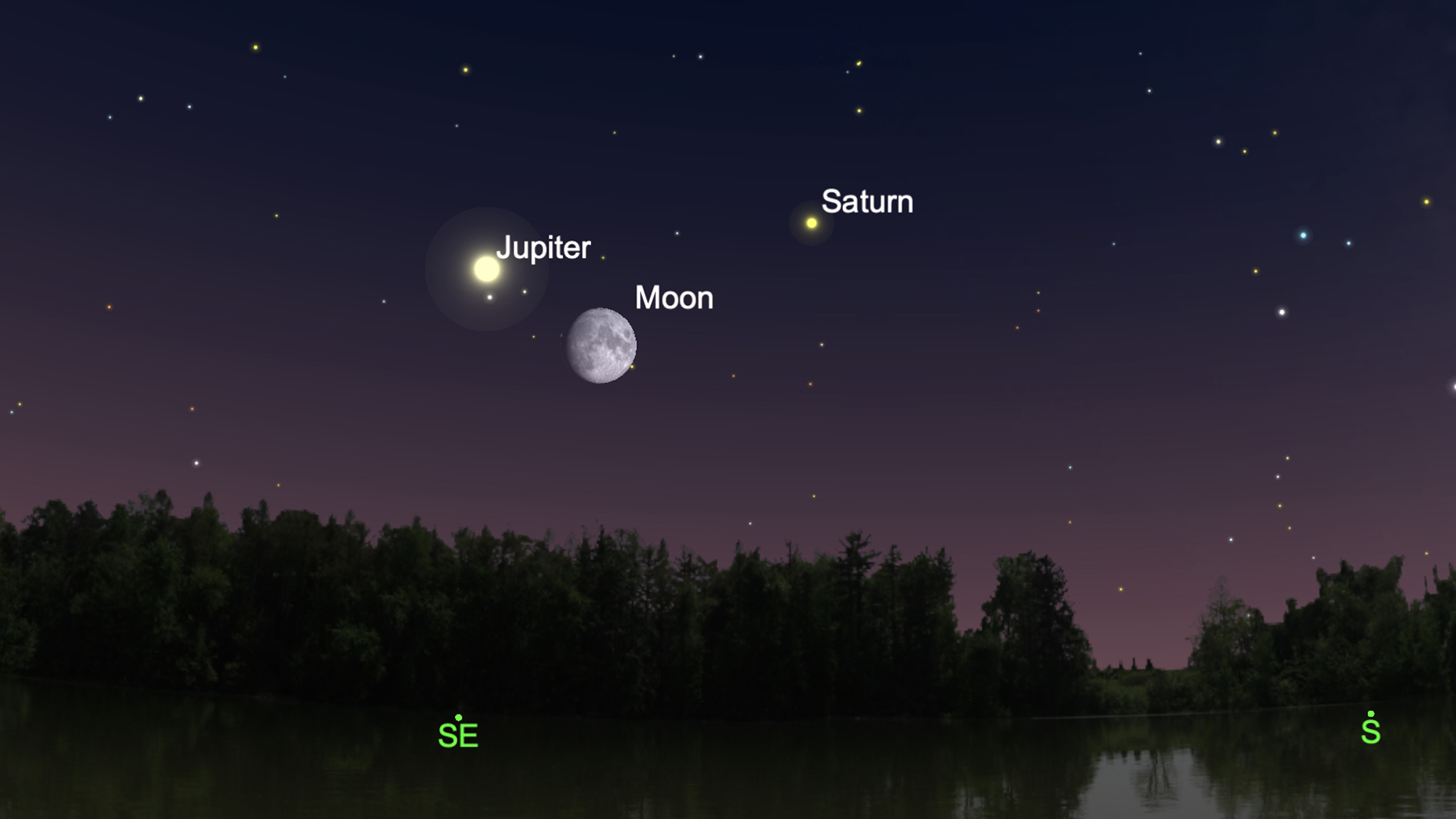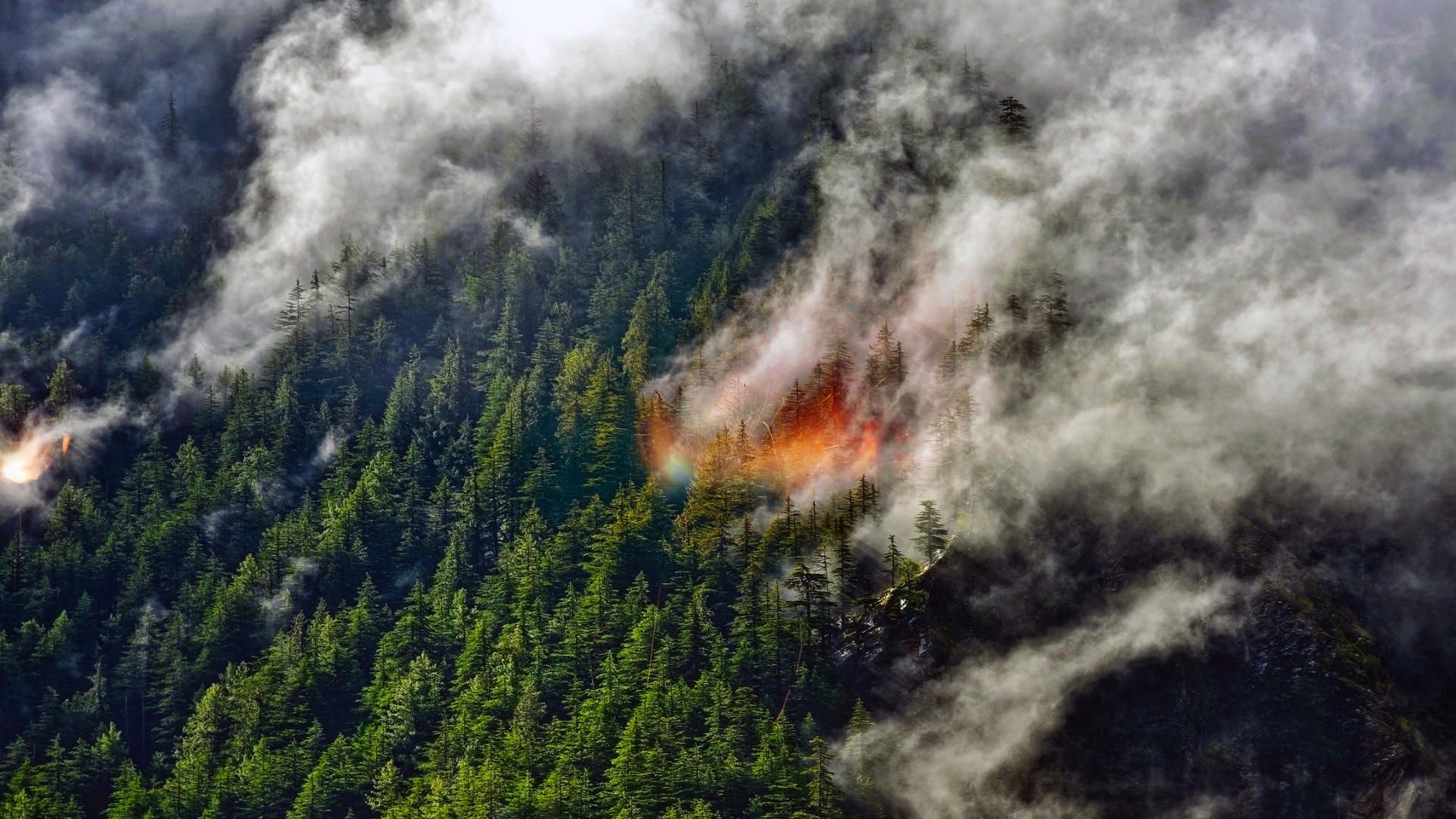The moon will visit Saturn and Jupiter this week in skywatching doubleheader

It's an excellent week to go skywatching as the moon creeps up to the two largest planets in our solar system.
On Thursday (Sept. 16), it will be the turn of what many consider to be the most beautiful of all telescopic objects, the ringed planet Saturn. The following night, the colossus of the solar system, mighty Jupiter, will take the spotlight.
Both nights, our nearest neighbor in space, the moon, will be shining in its waxing gibbous phase to join the spectacle. Here's what to expect from the planetary doubleheader.
Related: The brightest planets in September's night sky: How to see them (and when)
First, be sure to admire the moon, which is best to look at in the waxing gibbous phase, not, as many believe, when it's full. A full moon looks "flat" and one dimensional and its brilliance may dazzle the eye. But Thursday's moon is 83% sunlit and shines about one-third as bright as when it's full.
In particular, check out the region along the terminator — that part of the moon that separates the light zone from the dark zone. Especially in the lower part of lunar disk, you will see many craters casting shadows that will make them dramatically stand out in sharp relief.
First comes Saturn
On Thursday night, follow the moon up toward Saturn. Your clenched fist at arm's length is equal to roughly 10 degrees. So, Saturn will be situated about "half a fist" (5 degrees) above the moon.
Breaking space news, the latest updates on rocket launches, skywatching events and more!
As I have noted over the years here at Space.com, to the naked eye, Saturn does not possess any outstanding features to call attention to it. It lacks the dazzling; eye-popping brilliance of Venus or Jupiter and it does not have the fiery orange-yellow color of Mars.
In fact, to the eye, Saturn appears to be nothing more than a very bright "star" that shines with yellowish-white glow. Most people looking around the current late-summer sky might take note of it as they look toward the southern part of the sky this week at around 10 p.m. local daylight time. However, any telescope with an eyepiece magnifying at least 30-power will show the famous ring system. The best views of Saturn depend on the size of your telescope. My recommendation is not to use your highest power (which can magnify turbulence in the atmosphere and make the image appear to "boil" or "quiver"), but instead a moderate magnification. With a 3-inch telescope, try 75-power. With a 6-inch, 150-power and with a 10-inch, 250-power. Even for experienced, seasoned observers, the sight of Saturn's rings in a moderate or large telescope still brings surprise and astonishment!
As you enjoy the display, remember that what you are seeing in Thursday's sky is an illusion of perspective. The moon and Saturn are nowhere near each other in space. The moon will be 232,800 miles (374,500 kilometers) from Earth, while Saturn is almost 3,686 times farther away, at 858 million miles (1.380 billion km).
Related: Best telescopes 2021: Top picks for beginners, viewing planets, astrophotography and all-arounders
Friday is Jupiter's night

If your sky is clear early on Friday evening (Sept. 17), be sure to check out the southeast sky about an hour after sundown. There, located low in the east-northeast sky, you'll find an eye-catching sight.
You'll immediately see the waxing gibbous moon, now having widened to 91% illuminated by the sun. But on this evening, you'll also notice a very bright, silvery "star" shining with a steady glow to the upper left of the moon. That's not a star, but in reality, the biggest planet in our solar system: Jupiter. The moon and the planet will keep each other company as they move across the sky during the course of the night.
Jupiter is a particularly excellent planet to observe with a telescope. Its disk shows more illuminated surface area than all the other planets combined. In large telescopes, one can view its cloud belts; sometimes one or more appear strongly disturbed, full of knots and sprouting festoons. As always, seeing much detail on Jupiter requires a good quality telescope, good atmospheric seeing, and patience behind the eyepiece.
If you do turn a telescope to Jupiter, be sure to check for any signs of disturbance from the space rock that slammed into it on Monday (Sept. 13).
In addition, users of the very smallest telescopes or even steadily held binoculars can identify some or all of Jupiter's four bright moons at any given time. And Friday evening they will really be putting on great show!
On one side of Jupiter, all by itself, will be Ganymede, the largest satellite in our solar system. It is larger than Mercury, and three-quarters the size of Mars. On the other side of Jupiter, you'll see Io, Callisto and Europa; at around 11:18 p.m. EDT (0318 GMT Sept. 18), these three satellites will form a striking, inverted isosceles triangle, with Io and Europa forming the base and Callisto the vertex angle.
Let's go Mets!
Recently, during a telecast of a New York Mets/Miami Marlins game, a cameraman was so intrigued by Jupiter that during a lull in the ballgame he decided to zoom in on it, giving viewers a chance to see the big planet and its retinue of moons on their television screens. Met broadcaster Keith Hernandez said, "Hey guys, Saturn is up too! Why don't you find that?"
His broadcasting partners, Ron Darling and Gary Cohen, jokingly chimed in with, "What is this now, a planetarium? Are we going to start calling you 'Hayden' instead of Hernandez?" (The American Museum of Natural History in New York City includes the Hayden Planetarium.)
The Mets will be playing the Philadelphia Phillies on Friday night. If it's clear, maybe we'll get another televised view of Jupiter (along with, perhaps, the moon and Saturn) from Citifield that night, with Keith, Ron and Gary providing more "astronomical commentary."
Joe Rao serves as an instructor and guest lecturer at New York's Hayden Planetarium. He writes about astronomy for Natural History magazine, the Farmers' Almanac and other publications. Follow us on Twitter @Spacedotcom and on Facebook.

Joe Rao is Space.com's skywatching columnist, as well as a veteran meteorologist and eclipse chaser who also serves as an instructor and guest lecturer at New York's Hayden Planetarium. He writes about astronomy for Natural History magazine, Sky & Telescope and other publications. Joe is an 8-time Emmy-nominated meteorologist who served the Putnam Valley region of New York for over 21 years. You can find him on Twitter and YouTube tracking lunar and solar eclipses, meteor showers and more. To find out Joe's latest project, visit him on Twitter.
